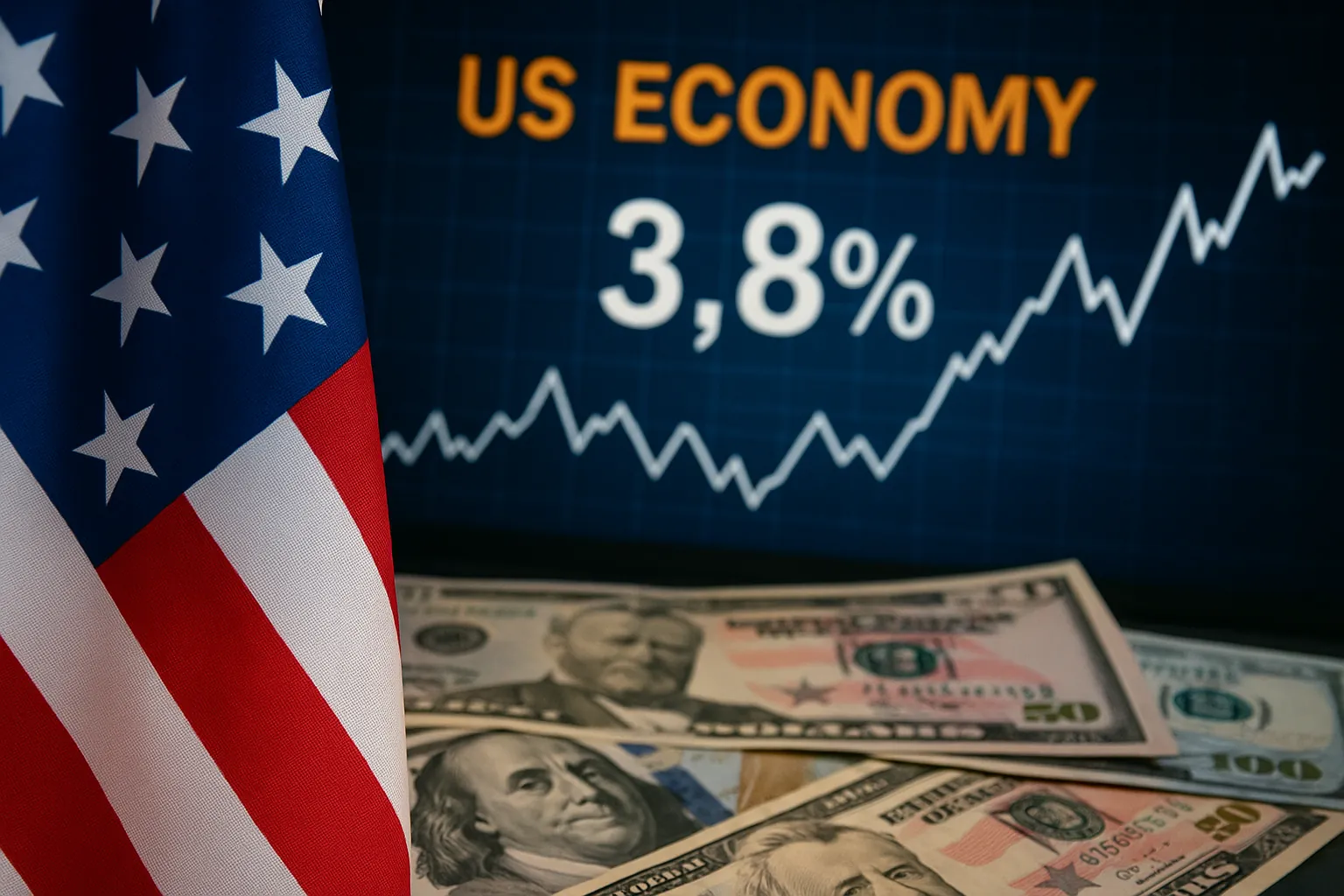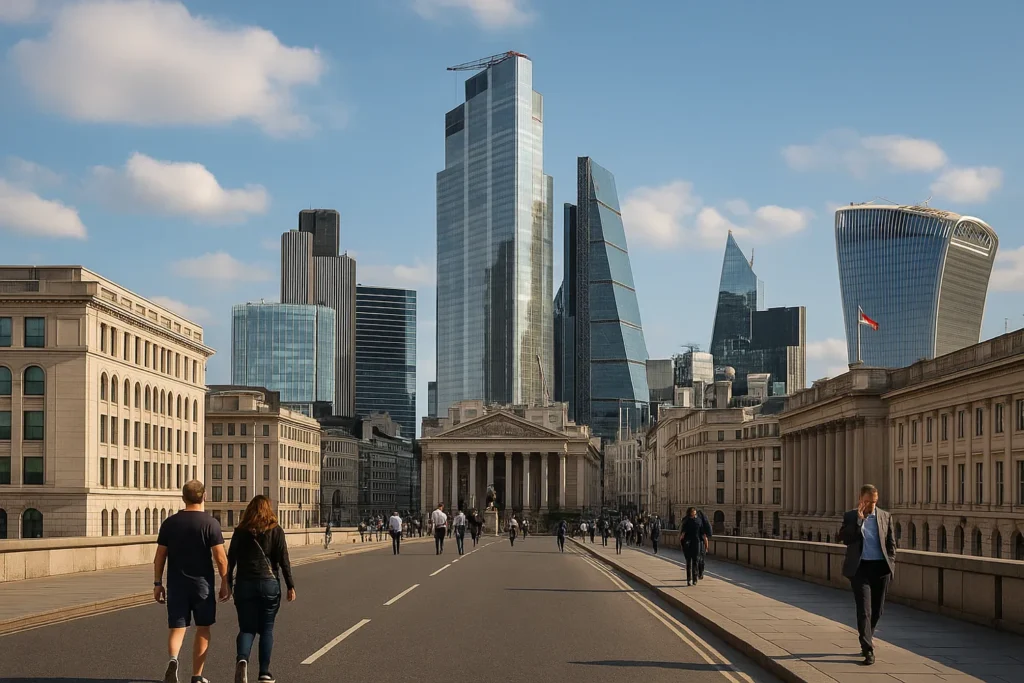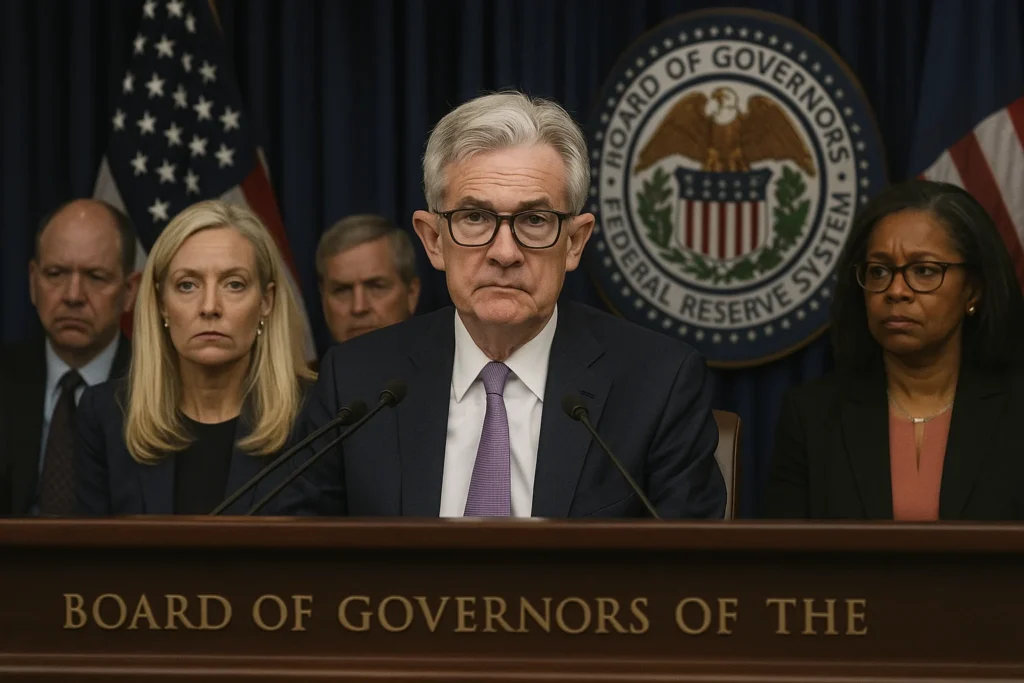The US economy growth figure of 3.8% in the second quarter has been trumpeted as a triumph of resilience. Mainstream outlets highlight consumer spending and business investment as proof that America’s growth machine is humming along. But beneath the headlines, there is a darker truth: this expansion rests on shaky foundations, with fiscal uncertainty and structural weaknesses threatening to turn today’s optimism into tomorrow’s crash.
Context: the official narrative
According to the revised data, the economy expanded at a 3.8% annualized rate. Consumer spending drove the bulk of the gains, supported by business investments that defied expectations of a slowdown. Economists interviewed by outlets like CNN hailed the report as a bright spot amid fears of inflation, trade wars, and political chaos.
They argue that even the ongoing government shutdown hasn’t derailed the economy’s trajectory. Instead, households, buoyed by wages and credit access, kept spending at malls, restaurants, and online platforms. Business investments in technology and equipment also rose, suggesting confidence in long-term productivity. For Washington policymakers, this number serves as ammunition against critics who warn of looming stagnation.
Oppositional Argument: the cracks in the story
Yet the glowing headline obscures an uncomfortable truth: US economy growth is increasingly artificial. Consumer spending, the supposed engine of this expansion, is not fueled by sustainable income growth but by mounting credit card debt and buy-now-pay-later schemes. Household debt has surged past $17 trillion, while delinquency rates on credit cards and auto loans creep higher.
Business investment too looks rosier on paper than in reality. Much of the capital spending is concentrated in a narrow band of tech giants chasing artificial intelligence dreams. Small and mid-sized firms face tighter credit conditions, higher borrowing costs, and collapsing venture capital inflows.
If the shutdown drags on, it could sap consumer confidence, delay federal payments, and choke off investment pipelines. In other words, the 3.8% figure might be less a reflection of durable health and more a sugar high before the crash.
Analytical Breakdown: causes and consequences
Why did growth outpace expectations? First, the Federal Reserve’s rate cuts earlier in the year temporarily boosted demand, lowering borrowing costs. Households refinanced mortgages and businesses rushed to lock in capital spending before rates tick up again. But this frontloading of demand is not sustainable.
Second, inflation remains stubborn. While official CPI numbers suggest moderation, food, housing, and healthcare costs continue to bite consumers. Real wages, adjusted for inflation, have barely moved. The result is a paradox: consumers are spending more, but many are saving less and borrowing more.
Third, geopolitical tensions add another layer of fragility. Trade disputes with China simmer in the background, and tariffs on key goods raise input costs for American businesses. Supply chain “reshoring” may look patriotic on paper, but it is driving costs higher in practice.
History offers sobering parallels. The late 1990s also saw robust consumer spending and tech-driven investment, only to culminate in the dot-com crash. The difference today is the staggering weight of public and private debt, which leaves little room to maneuver when the cycle turns.
Human Perspective: what it feels like on the ground
For ordinary Americans, US economy growth feels like a mirage. Ask a family in Ohio juggling grocery bills, rent, and medical costs whether 3.8% growth has improved their lives, and the answer is clear. Growth numbers do not pay the bills.
College graduates in their twenties, entering a job market where wages lag behind housing costs, face an uphill climb. Workers in manufacturing hubs, promised a renaissance from reshoring and tariffs, see layoffs instead as firms automate or relocate elsewhere. Meanwhile, inflation ensures that every extra dollar earned buys less.
One Washington insider confided to me: “The numbers are good enough to calm Wall Street, but Main Street is still restless. Politicians are clinging to this GDP print because it’s all they have between now and the next election.”
Counterarguments
Defenders of the report argue that consumer confidence surveys remain high and that business inventories signal future expansion. They note that recessions are often wrongly predicted in times of strong growth. Yet this optimism ignores the structural rot: reliance on debt-fueled consumption, fragile supply chains, and fiscal brinkmanship in Washington.
Conclusion: a fragile victory
The revised 3.8% US economy growth rate is less a triumph than a warning. America’s economy is sprinting on borrowed energy, driven by debt and fragile consumer confidence. Inflation, trade disputes, and fiscal paralysis could unravel the story at any moment.
The lesson is simple: don’t confuse a sugar rush with strength. Unless policymakers confront structural weaknesses — from spiraling debt to a hollowed-out middle class — this growth will prove ephemeral. For investors, workers, and voters alike, the headline number should be read with suspicion, not celebration.
External Links
31 views






